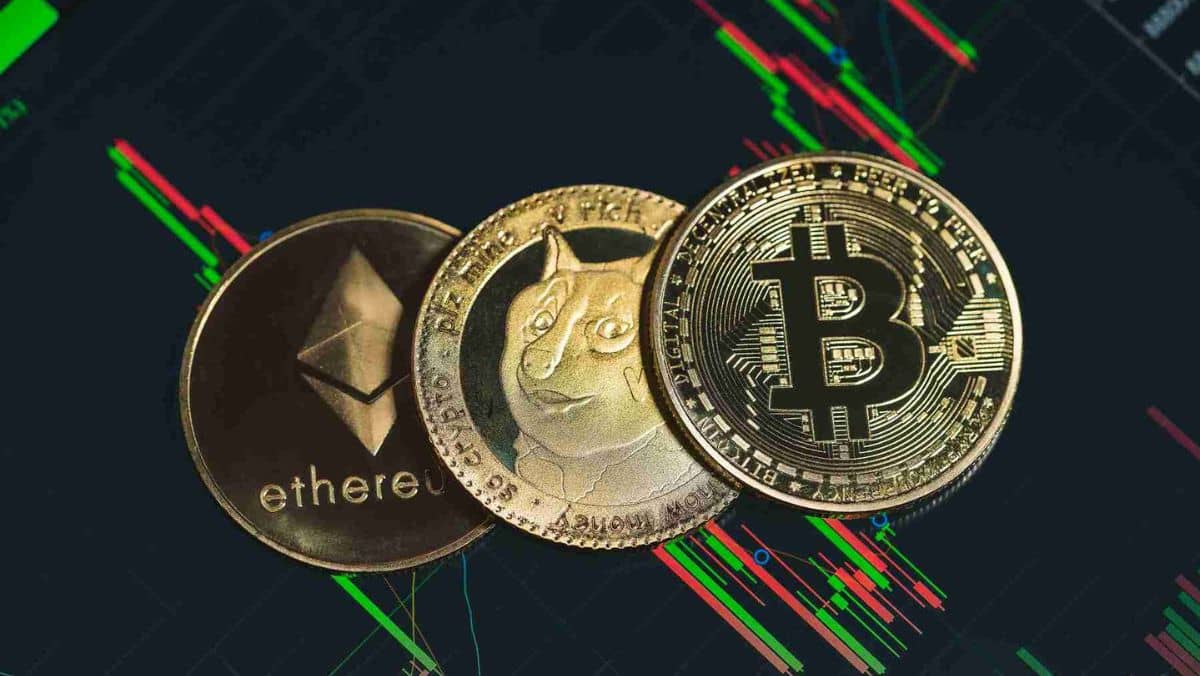Tuesday Feb 6 2024 09:35

10 min

Cryptocurrencies are known for their extreme volatility. The prices of popular cryptos like Bitcoin and Ethereum often swing wildly from day to day. This volatility is both a blessing and a curse for crypto investors.
On the one hand, it provides opportunities to profit from price swings. But, it also means there is a substantial risk of losses.
This article will analyze the differences in volatility across major crypto assets and examine what leads to these disparities.
As the first and largest cryptocurrency, Bitcoin (BTC) is often seen as the benchmark for volatility in the crypto space. Among the top cryptos, Bitcoin shows relatively lower volatility.
One reason is Bitcoin's large market capitalization and liquidity, which help dampen price swings. Bitcoin's visibility and mainstream adoption also contribute to its lower volatility profile.
However, Bitcoin is highly volatile compared to traditional investment options like stocks. Its volatility is estimated to be around 5-7 times that of the S&P 500 index over the past five years.
So, while Bitcoin is less volatile than other cryptos, it still carries high volatility that investors must be aware of.
Periods of low volatility are often followed by bursts of high volatility in the case of Bitcoin.
Cryptocurrencies other than Bitcoin are collectively known as altcoins. As a category, Altcoins tend to be much more volatile than Bitcoin.
Some examples are Ethereum (ETH), Litecoin (LTC), and Ripple (XRP). With lower liquidity and smaller market caps, altcoin prices routinely see double-digit percentage moves.
The heightened volatility in altcoins comes from their speculative nature, and their adoption and real-world usage are minimal compared to Bitcoin.
Most altcoins lack the stability and widespread visibility that Bitcoin enjoys. Their smaller scale also amplifies volatility, as even small price swings can result in large percentage changes.
Among altcoins, recently launched or smaller-cap coins tend to be extremely volatile. Prices can spiral up or down very rapidly within short periods. Investors need to tread carefully when dealing with such high volatility.

Stablecoins are a new breed of cryptocurrencies explicitly designed to minimize volatility. They achieve this by pegging their value to an external stable asset. Stablecoins aim to maintain a constant value, typically $1 per coin.
Popular stablecoins like Tether (USDT) and USD Coin (USDC) peg their value to fiat currencies like the U.S. dollar. Because dollar-denominated reserves collateralize them, they avoid the volatility pitfalls of other cryptos.
Other stablecoins peg their value to assets like gold or other cryptocurrencies.
Since stablecoins have low volatility, they are suitable as a store of value and reduce risks for investors. They provide an option to crypto investors looking to temporarily avoid volatility by moving into stable assets.
Now that we have seen how volatility differs widely across the crypto spectrum, let's understand the factors that drive these volatility differences.
Liquidity: This refers to how easy it is to buy or sell an asset without impacting the price. Bitcoin has high liquidity, which helps reduce volatility.
Altcoins generally have much lower liquidity, leading to higher volatility. Low liquidity can heighten price swings.
Market Maturity: The crypto market is still early in its maturity cycle. As it evolves, volatility is expected to reduce as investor behaviours become less speculative and more rational. Bitcoin is relatively mature compared to new altcoins.
News Events: Crypto prices are highly reactive to news and events. Positive or negative news about regulations, adoption, security issues, etc., can spark significant volatility. Bitcoin, as the most prominent crypto, tends to be less sensitive.
Supply Shocks: Crypto prices see spikes in volatility during events like forks, which alter coin supply. The more mature Bitcoin blockchain has historically handled forks smoothly.
Leverage Trading: Leveraging is prevalent in crypto, allowing amplified profits but also losses. This can multiply volatility when liquidations happen during large price drops.
Correlation with Other Asset Classes: Crypto is seen as a non-correlated asset class. During times of stock market volatility, cryptos act as diversifiers, driving increased interest and volatility.
Speculation: A large portion of crypto activity is speculative. This creates ideal conditions for volatility to arise from investor emotions like fear and greed.

Cryptocurrencies are far more volatile investments than stocks. This higher volatility stems from several differences between the crypto and stock markets.
Firstly, cryptocurrency prices fluctuate daily, while stocks have smaller, more gradual price movements. For example, Bitcoin's historical volatility exceeds 75% annually, compared to just 15-20% volatility for the S&P 500 stock index. Cryptocurrencies lack the stability and consistency of most blue-chip stocks.
Secondly, the extreme price swings in crypto can be attributed to lower liquidity, rampant speculative trading, lack of regulation, and acute sensitivity to hype or news. Stocks benefit from deeper liquidity in exchanges, more diversity in companies and sectors, and valuations based on company fundamentals rather than pure speculation.
Thirdly, cryptocurrencies are traded 24 hours a day, seven days a week. This constant availability allows prices to be moved around the clock. Stocks, however, are limited to exchange trading hours, reducing potential volatility.
While some high-risk or penny stocks can be highly volatile, major stock market indexes are relatively stable compared to the major cryptocurrencies.
This makes crypto inherently riskier, albeit with more potential for extreme short-term gains.
Consider giving this a look: CFD Trading Strategies for Beginners
Cryptocurrency trading carries risks due to the extreme volatility in the crypto markets. While the potential for large gains attracts many traders, the heightened volatility also means a high risk of losses.
As this article outlines, the differences in volatility across crypto assets illustrate why thorough research is essential before trading.
Traders should take the time to educate themselves on the factors driving volatility for any cryptocurrency they are considering.
Proper due diligence and managing risks are crucial to succeeding and thriving in these volatile markets.
Learn and trade with markets.com: The ultimate trading community!
“When considering “CFDs” for trading and price predictions, remember that trading CFDs involves a significant risk and could result in capital loss. Past performance is not indicative of any future results. This information is provided for informative purposes only and should not be considered investment advice.”